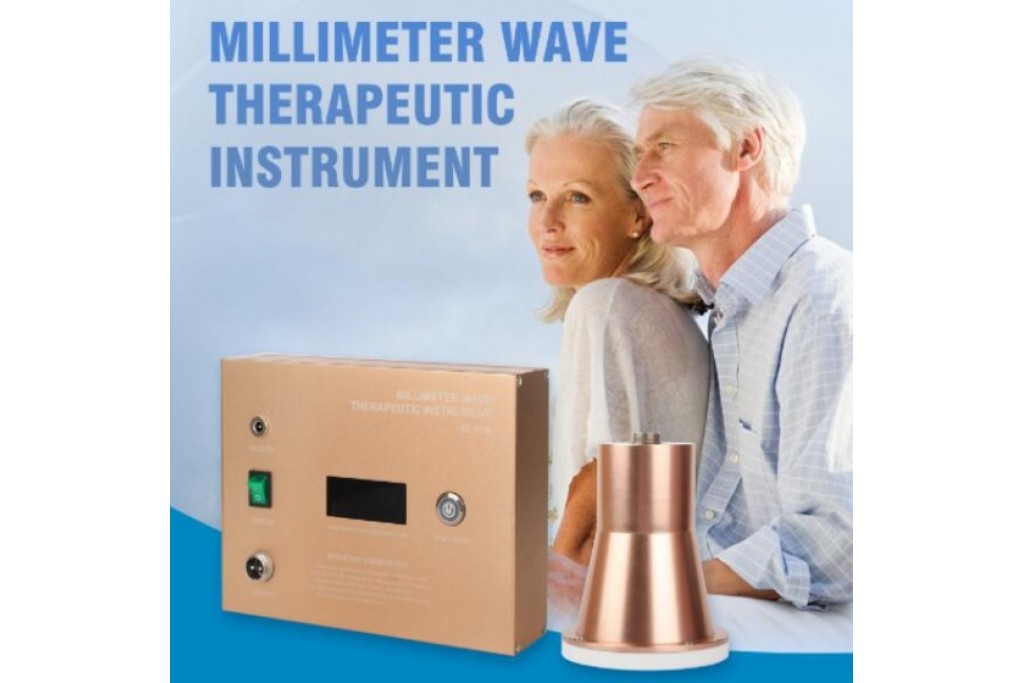Introduction of Millimeter wave therapy
- Chris
- July 07, 2025
- 100
- 0
- 0
Introduction of Millimeter wave therapy
Millimeter electromagnetic waves (MMWs) are widely used for the treatment of many diseases in Russia, China, and many East European countries [1-6]. The three most common frequencies employed are 42.2, 53.6 and 61.2 GHz. These are approved by Russian Ministery of Health for medical treatment Excellent clinical results have been reported in the treatment of various diseases, including peptic ulcers, pain relief, cardiovascular diseases, wound healing, bronchial asthma, infantile cerebral palsy, skin disorders, chronic alcoholism, diabetic angioneuropathies, and cancer. Based upon some estimates, there are more than 1000 medical facilities in Russia alone where MMW therapy is being used, and the number of patients undergoing medical treatment exceeds 250 thousand per year [1]. In spite of the large numbers of patients treated with MMW therapy (MMWT) in the former Soviet Union, this treatment modality is virtually unknown to Western physicians and scientists. MMWs can be used as a monotherapy or in combination with other treatment methods. As an adjunct therapy, they are widely used to protect the immune system from the toxic effects of chemo- and radiation therapy in the treatment of cancer [3,7].
The usual treatment regimen consists of daily applications of low power MMW radiation for 15 to 30 minutes for 5 to 15 days. The MW device is typically a “book-sized” instrument which is brought in close contact with the skin surface. The site of application varies with the disease being treated. Surface wounds and skin diseases are usually treated at the site of the lesion. In treating arthritis, the site of application is at the affected joint. In treating internal diseases, the recommended site of application may be at any one of a number of anatomic or acupuncture points. A common site of application is the lower end of the sternum [6].
In recent years, several papers have been published on the biological effect of millimeter waves showing an increasing interest in the application, and understanding the mechanisms involved in MMWT [8-13]. In general, the effect of MMWT in clinical applications can be divided into three broad classes: (a) sedative and analgesic effects, (b) anti-inflammatory and repair stimulating action and (c) normalization of the immune system. There are many reports, mostly in the Russian literature, that MMWT produces both nonspecific and specific enhancement of the immune system [14,15]. The changes include an increase in phagocytic activity of macrophages [16], enhanced proliferation and normalization of the ratio of CD4+/CD8+ T-lymphocytes [17,18], and increased number of B-lymphocytes and normalized production of immunoglobulins [17-19]. It is generally believed that beneficial effects of MMWT in many diseases are due to enhancement of the immune response. In cancer treatment, MMWT has been used as monotherapy or in combination with chemo- and radiotherapy to increase immunity, and to reduce the toxic side effects of the above therapies [3,7,20]. Our experimental studies have shown that MMWT can reduce spread of melanoma metastasis [21]. In this short article, we review the current knowledge of the effects and molecular mechanisms of MMW therapy in protecting the immune functions from the toxic effects of chemotherapy. Specifically, we will discuss the effect of MMWT on T cells, NK cells and macrophage functions which constitute the most important cells in the fight against cancer.

